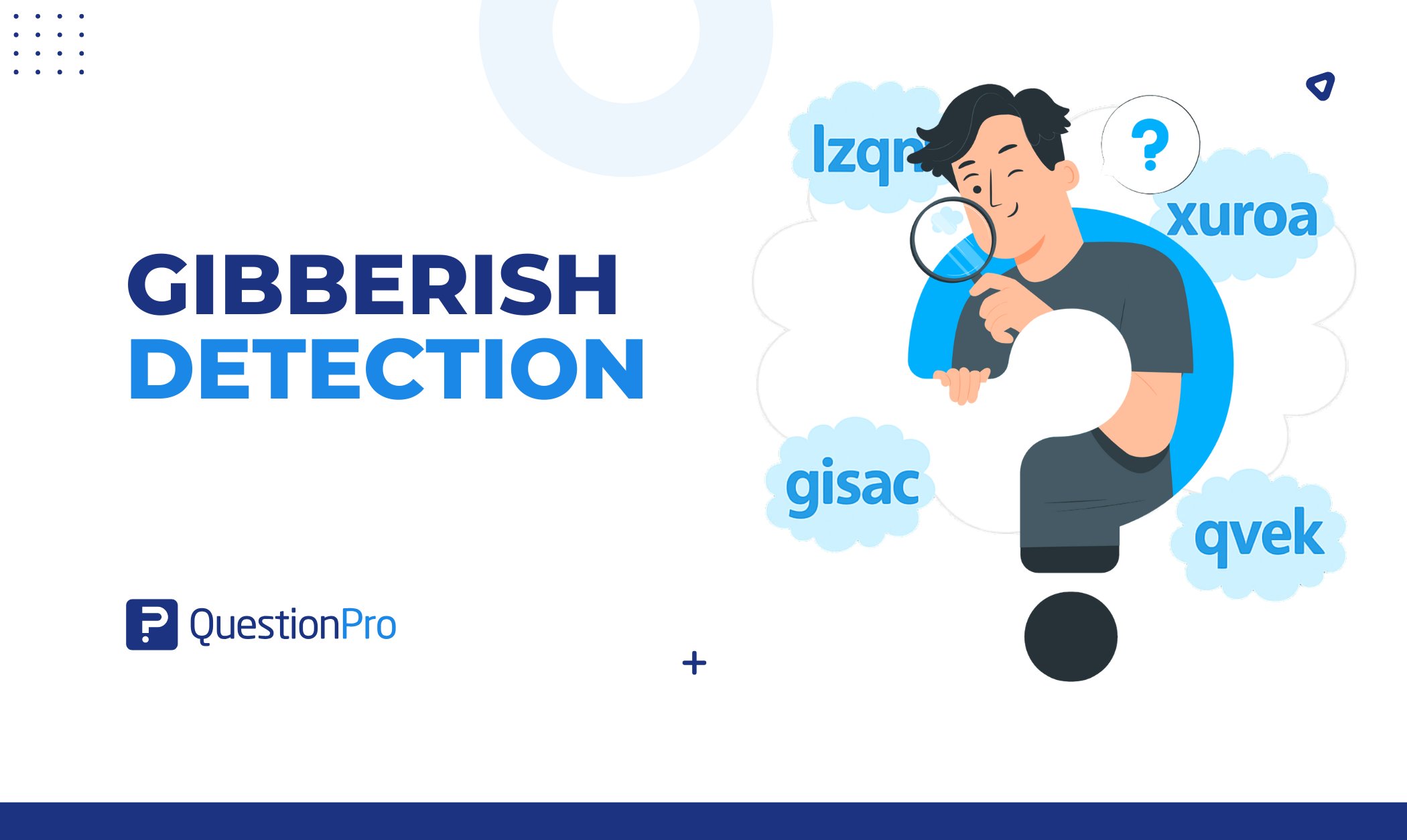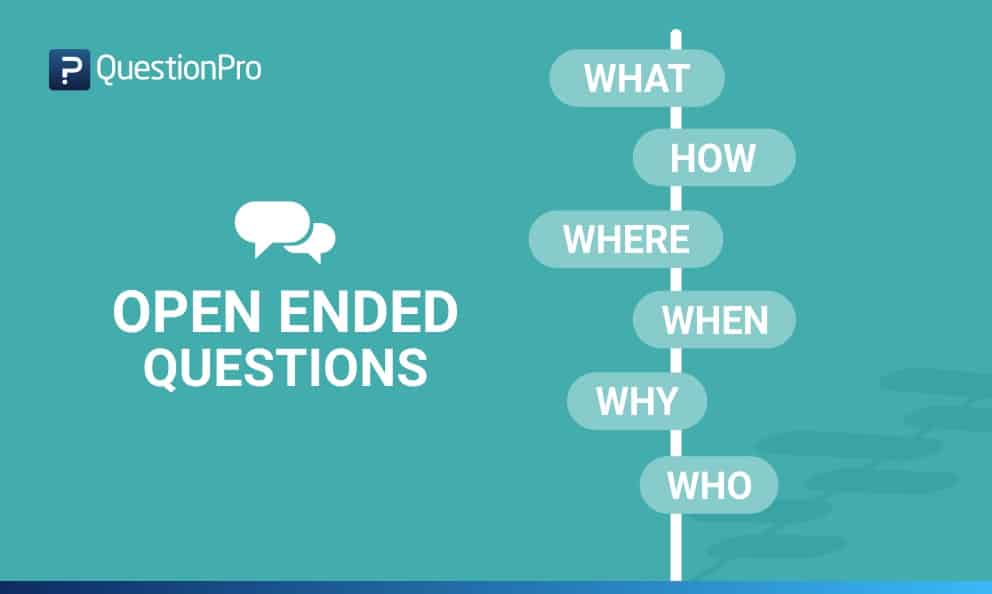
When creating surveys, it’s important to decide whether to use open-ended or closed-ended questions to gather specific information. Each type of question has its pros and cons and works differently in various situations.
Open-ended questions are designed to get detailed responses from the person being asked. For example: “Where is my wallet?” These questions go beyond just getting an answer—they help understand someone’s point of view, making them useful in the workplace, schools, and other settings.
Asking open-ended questions is a great way to inspire creativity and curiosity. These questions encourage deeper thinking and allow people to share their ideas.
In this blog post, we’ll explore what open-ended questions are, how to ask them, and provide some examples to help you use them in your surveys.
What is an Open-Ended Question?
Open-ended questions are free-form survey questions that allow and encourage respondents to answer in open-text format to answer based on their complete knowledge, feelings, and understanding. The detailed response to this question is not limited to a set of options.
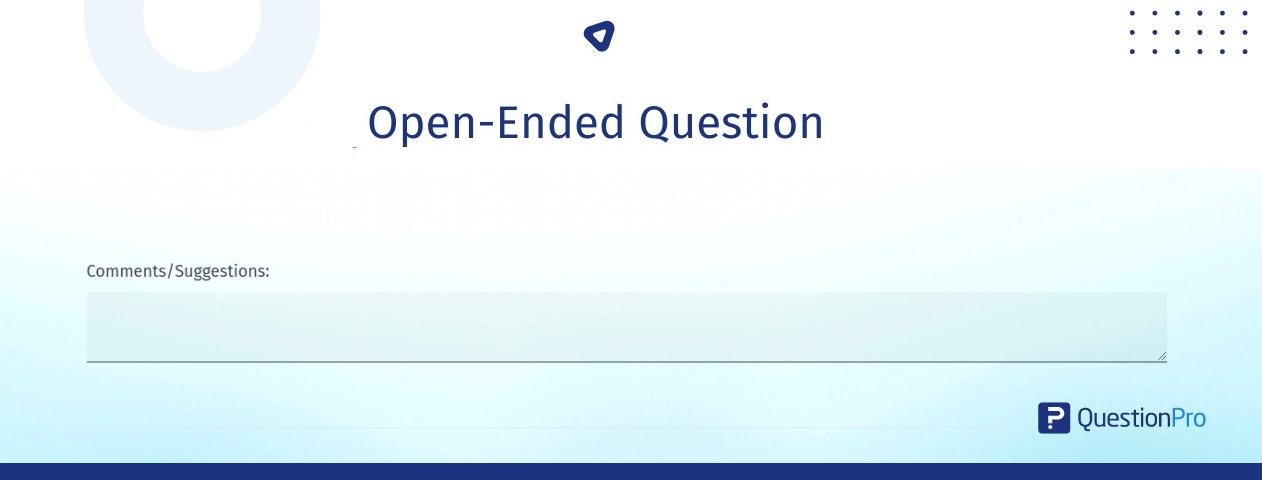
Unlike a closed-ended question that leaves survey responses limited and narrow to the given options, an open-ended question allows you to probe deep into the respondent’s detailed answers, gaining valuable information about the subject or project. The detailed responses to these qualitative research questions can be used to attain detailed and descriptive information on a subject.
They are an integral part of qualitative market research. This research process depends heavily on open and subjective questions and meaningful answers on a given topic of discussion or conversation, with room for further probing by the researcher based on the answer given by the respondent. In a typical scenario, closed-ended questions are used to gather qualitative data from respondents.
Examples of Open-Ended Questions
Respondents like open-ended questions as they get 100% control over what they want to respond to, and they don’t feel restricted by the limited number of options. The beauty of the process is that there can never be a one-word answer. They’ll either be in the form of lists, sentences or something longer like speech/paragraph.
So, to understand this more, here are some open-ended question examples:

- Interview method
How do you plan to use your existing skills to improve organizational growth, if hired by the company?
- Customer-facing
Please describe a scenario where our online marketplace helps a person make day-to-day purchases in daily life.
- Technical
Can you please explain the back-end Javascript code template used for this webpage or blog post?
- Demographic
What is your age? (asked without survey options)
- Personal / Psychographic
How do you typically deal with stress and anxiety in your life?
In a study conducted by Pew Research, respondents were asked, “What mattered most to you while deciding how you voted for president?” One group was asked this question in a close-ended question format, while the other was asked in an open-ended one. The results are displayed below:
| Closed-ended | Open-ended | |
| The economy | 58% | 35% |
| The war in Iraq | 10 | 5 |
| Health care | 8 | 4 |
| Terrorism | 8 | 6 |
| Energy policy | 6 | – |
| Others | 8 | 43 |
| – Candidate mentions | – | 9 |
| – Moral values/social issues | – | 7 |
| – Taxes/dist. of income | – | 7 |
| – Other issues | – | 5 |
| – Other political mentions | – | 3 |
| – Change | – | 3 |
| – Other | – | 9 |
| Don’t know | 2 | 7 |
| 100 | 100 |
In the format of the close-ended questions, 58% of respondents chose “The economy”. In the other format, only 35% wrote an answer that indicated “The economy.”
Note that only 8% of respondents selected “Other” in the format of the close-ended question. With an open-ended format, 43% of respondents wrote in a response that would have been categorized as “Other.”
Open-Ended Questions vs Close Ended Questions
When we talk about creating a questionnaire, the most common options are choosing between Open-Ended Questions vs Close-Ended Questions. Below, we’ve outlined some of the key differences to help you decide when it’s ideal to choose one type of question over the other.
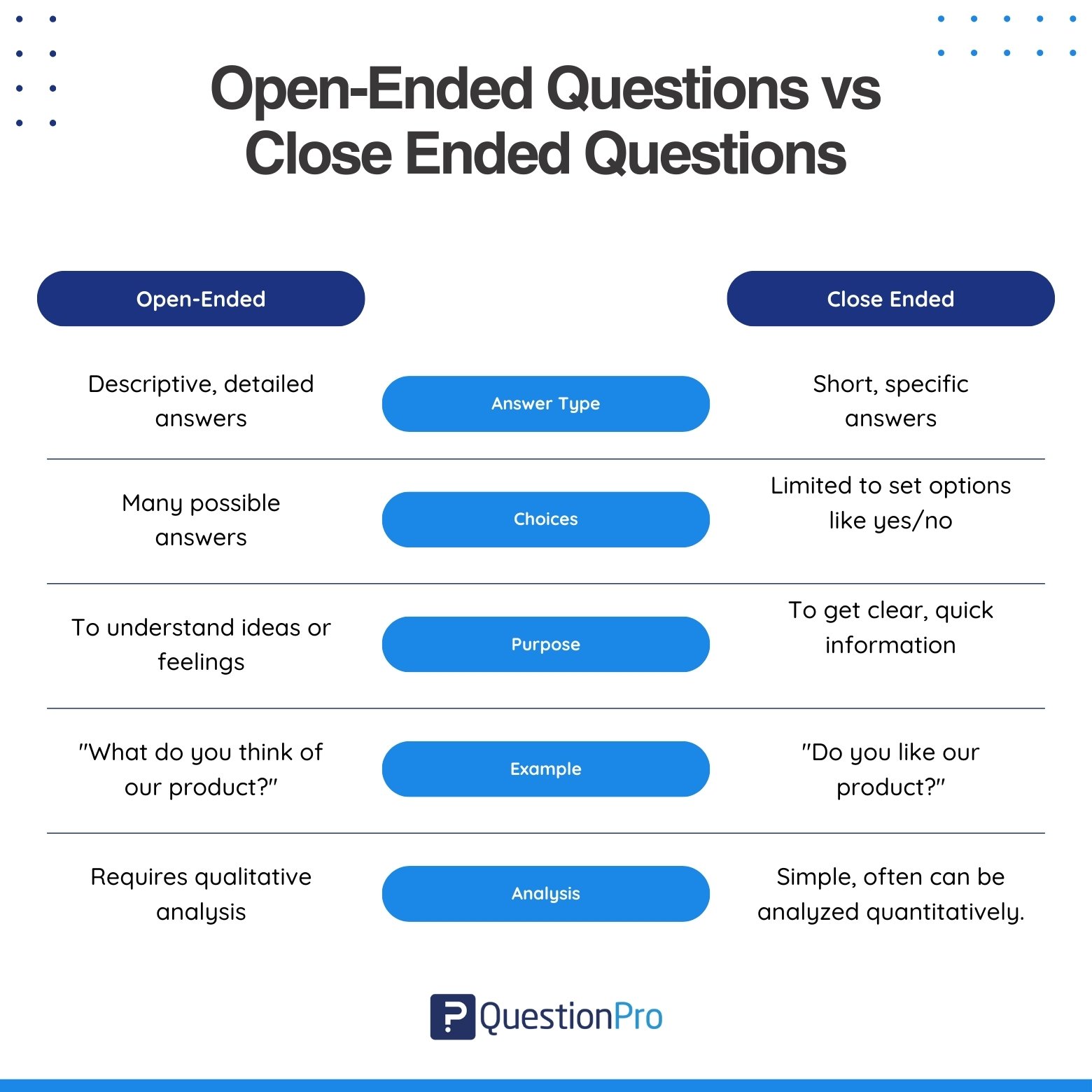
Open-ended questions motivate the respondents to put their feedback into words without restricting people’s thoughts. They aren’t as objective and dominant as close-ended questions.
|
Close-Ended Questions |
Open-Ended Questions |
Do you like working with us?
| Tell us about your experience with our organization so far. |
Have you been stressed lately?
| Share with us what has been troubling you. |
How satisfied are you with your current job role?
| What do you expect from this appraisal? |
By using these leading questions, the researcher understands the respondents’ true feelings. They have an element that will give you information about different thought processes across your clientele, troubleshooting suggestions, and getting a peek into their inhibitions too.
- The open-ended and closed-ended questions are different tasks for respondents. In the open-ended task, respondents write down what is readily available in their minds. In the close-ended question task, respondents focus their “attention on specific responses chosen by the investigator” (Converse and Presser, 1986).
- Asking the same question in these two different formats will almost always produce different results. Many investigators have demonstrated this over several decades.
- Few respondents are going to select the “Other” category and enter responses that are different from the answer choices that are listed.
So what does this mean for us? If you can, do qualitative research first and ensure your close-ended questions represent the items in people’s heads. We need the list of items to be complete since few respondents will select the “Other” category. It may also be necessary to list items not readily available to respondents if they are important to you.
Consider doing split-sample studies where half of the respondents see the question in the open-ended format while the other half see the question for feedback in the format of the close-ended questions.
When presenting results, I have found it helpful to explain the fundamental differences between open-ended and closed-ended question examples in a sentence or two. It helps them understand that these are not necessarily precise measurements but measurements that require some interpretation relative to other questions in the survey and additional information from steps in qualitative research. Hence, that is why they need an analyst like you or me!
Why Use Open-Ended Questions?
In your survey, you likely ask a variety of questions. But did you know that the way you ask them really matters? It does! Using open-ended questions instead of closed ones encourages creative thinking, improves communication skills, and offers many other benefits. Here are some reason asking open-ended questions:
- Unrestricted Opinions: The customers need a platform to voice their opinions without limits on the answers. Happy or unhappy. As answer options for questions aren’t provided, the respondent has the liberty to include details about good life, feelings, attitudes, and views that they usually wouldn’t get to submit in single word answers.
- Creative Expression: These questions are more appreciative of the respondents than close-ended questions as users aren’t expected to just “fill” them out for the sake of it.
- Spellbinding Vision and Creativity: Respondents may stun you with the vision and creativity they show with their more detailed answers. Links to their blogs or a verse or two of their poetry will leave you spellbound.
- Embracing Freedom of Response: If there are only close-ended questions in a microsurvey, the users usually get disconnected and fill it out without giving it much thought. With the kind of freedom that open-ended questions offer, users can respond the way they’d like to, be it the number of words or the details or the tone of the message.
- Driving Marketing and Innovation: These responses may be marketing tips for improving the organization’s branding or some creative ideas that can lead to monetary gains in future.
- Tackling Complexity: Knotty situations need more than just a mere Yes/No feedback. Single-select or multiple choice questions cannot do justice to the detail process or scrutiny required for some critical and complex situations.
- Deeper understanding and Exploring Customer Feedback and Troubles: These questions work best in situations where the respondents are expected to explain their feedback or describe the troubles they’re facing with the products.
- Unveiling Customer Insights: You can learn from your respondents. The open-ended questions offer the freedom to these respondents to be vocal about their opinion that would be insightful for a company.
- Revealing Thought Patterns: Respondent logic, thoughts, language, and reference choices can be known from these questions that can reveal a lot about how the respondent’s brain functions.
Always think before designing a survey as to what your objective is. Scrutinize the purpose, evaluate the positives and negatives of using an open or closed answer for your research study. Try it by sending out to a selected database, analyzing the results, and planning improvements for the next round of surveys.
How to Ask an Open-Ended Question?
Everything easy or complicated requires competence. Asking the right question is also one such thing that requires capabilities. Capability to understand and segment the target audience, determine the kind of questions that will work well with that audience, and determine the efficiency of them.
Here are four ways to create effective open-ended questions:
01. Understand the difference between open-ended question and closed-ended question
Before you start putting questions to paper, you need to have absolute clarity on open-ended vs closed-ended questions. Your objective of sending out an online survey should be clear, and based on that, you can evaluate the kind of questions you would want to use.
These are usually used where the feelings and feedback of the customer are highly valued. To receive 100% transparent feedback on these questions, make sure that you don’t lead the respondents with your questions and give them complete liberty to fill in whatever they want.
02. Create a list of open-ended questions before curating the survey
Once you get clarity on what are open-ended questions and how to implement them, figure out a list of survey questions that you’d want to use. First, you can have a fair share of open-ended questions in your survey, which can fluctuate depending on your responses.
Examples of open-ended questions like these are extremely popular and give you more value-added insights:
- Why do you think competitive market research is important before launching a new business?
- How do you think you’ll overcome these obstacles in our project?
- Tell us about your experience with our onboarding process.
- What are your professional priorities at the moment?
- What domain of work motivates you?
- You can make a list of similar questions before you start executing the survey.
03. Reconstruct any question into an open-ended question
Observation is the key here. Observe what kind of questions you usually ask your customers, prospects, and every other person you come across. Analyze whether your questions are closed-ended or open-ended. Try and convert those closed questions into open-end ones wherever you think the latter would fetch you better results and valuable insights.
04. Follow up a closed-ended question with an open-ended question
This trick works wonders. It’s not always possible to convert a closed question into an open one, but you can follow up by getting a question answered.
There’s no right or wrong answer. These types of questions do not have a specific answer and require the respondent to provide their own ideas, opinions, or explanations.
For example, if you have a closed question like – “Do you think the product was efficient?” with the options “Yes” and “No”, you can follow it up with an open question like “How do you think we can make the product better in future?”
Regarding surveys, the advantages of open questions surpass that of closed ones.
How to Add Open-Ended Questions in Survey Using QuestionPro?
1. Go To: Login » Surveys » Edit » Workspace
2. Click on the Add Question button to add a question.
3. Select Basic, then go to the Text section and select Comment Box.
4. Enter the question text.
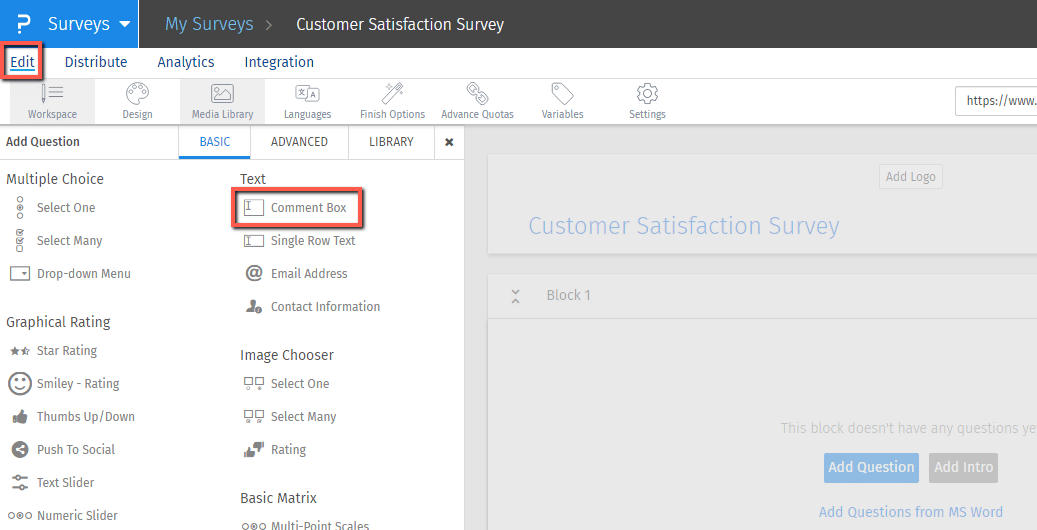
5. Select the data type: Single Row Text, Multiple Rows Text, Email address, or Numeric Data.

6. Select the Text Box Location (below or next to question text). Enabling “next to question text” will put the text box to the right of the question.
How to View the Collected Data?
1. Click on Login » Surveys » Analytics » Text Analytics » Text Report


Please note that analysis for open-ended text questions is not included in the Real-Time Summary or Analysis Report. To view the analysis of open-ended questions, you can see the Word Cloud report.
Can You Limit The Number of Characters in a Text Question?
You can set the limit of the number of characters that respondents can enter in the textbox.
How to Mark The Question as Mandatory?
To make the question mandatory, you can toggle the validation on and select ‘Force Response’. It is off by default. When ‘Force Response’ is not enabled, respondents can continue with the survey without selecting answers. If respondents go through all the pages in the online questionnaire without selecting answers, the response is still considered complete. You can enable the required option to make a question required so that respondents can continue with the survey only after responding to the questions.

Closed-ended questions, like open questions, are used in both spoken and written language and in formal and informal situations. It is common to find questions of this type in school or academic evaluations, interrogations, and job interviews, among many other options.
Whether you need a simple survey tool or a collaborative research solution, with our Academic licenses for universities and educational institutions, you get access to all the best features used by our Enterprise research clients.
- Advanced logic and workflows for smarter surveys
- Over 5000 universities & colleges and over 1 million+ students use QuestionPro
- Academic license supports multi-admin role environment
Who said work couldn’t be fun? Research shows that small breaks between work tasks can improve productivity in the long term. Boost Team Fun & Productivity with “This or that questions“.
Conclusion on Open-Ended Questions
Open-ended questions are essential to note that crafting practical open-ended questions requires skill and careful consideration. Questions should be clear, concise, and relevant to the topic. They should avoid leading or biased language, allowing individuals to express their views without undue influence.
Overall, open-ended questions are powerful to gather information, foster communication, and gain deeper insights. Whether used in research, professional settings, or meaningful conversations, they enable individuals to explore ideas, share perspectives, critical thinking of a person, and engage in meaningful discussions. By embracing the openness and curiosity of open ended questions, we can uncover new knowledge, challenge assumptions, and broaden our understanding of the world.




